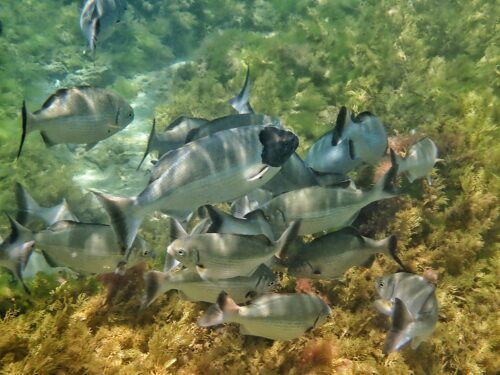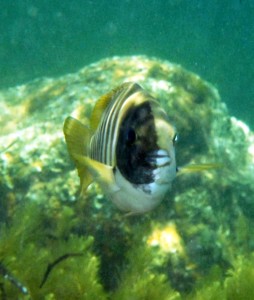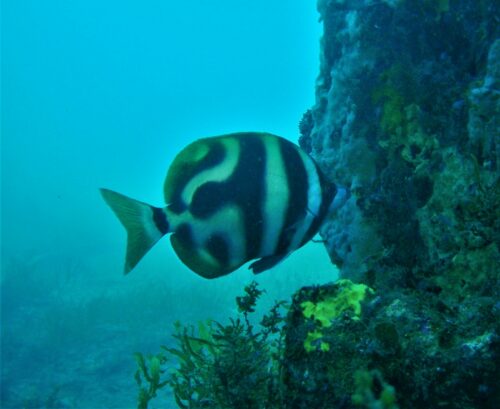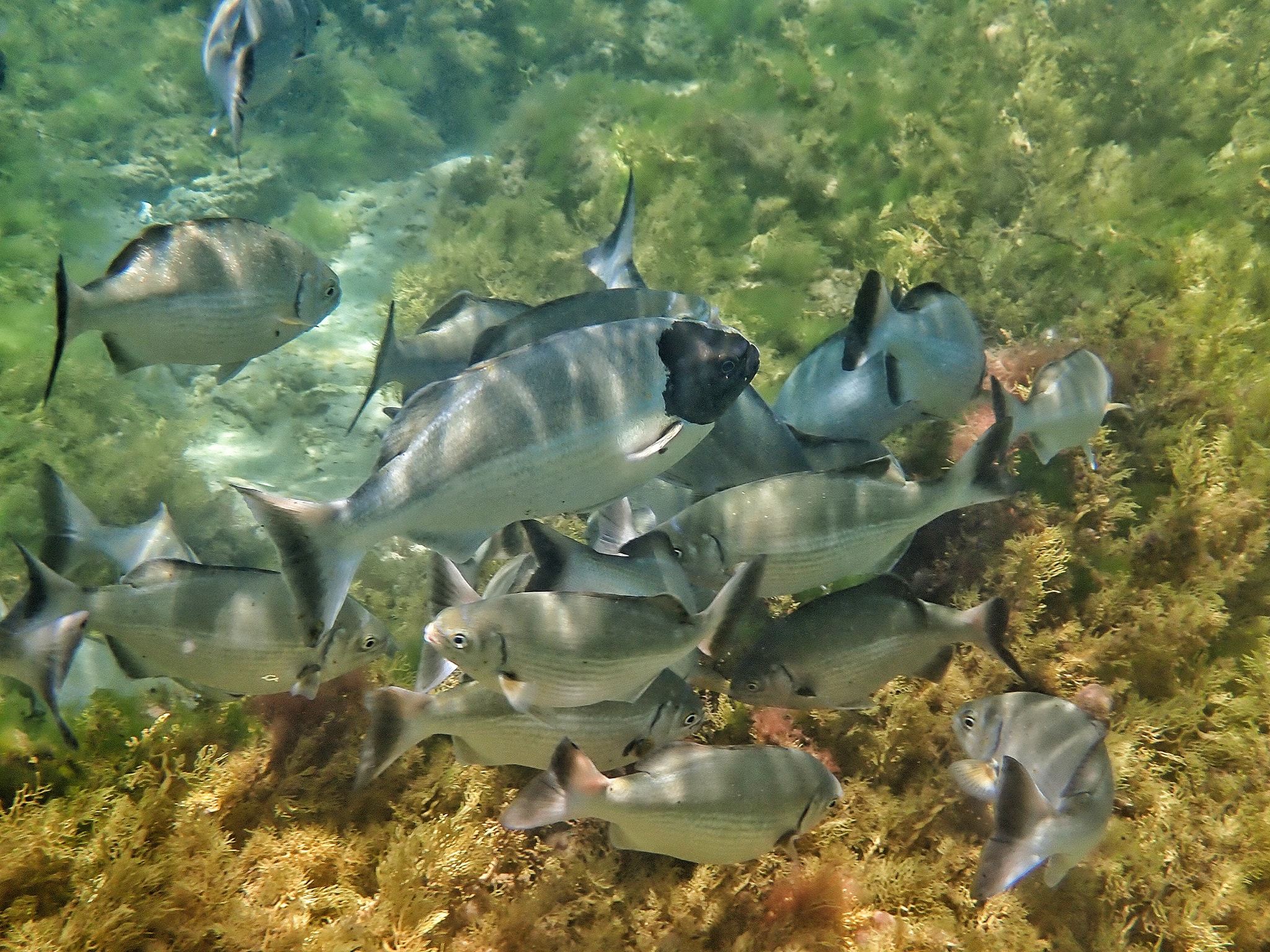Renate Honow took this photo of a school of silver drummer, Kyphosus sydneyanus at Christies Beach recently: –

A school of silver drummer, Kyphosus sydneyanus at Christies Beach
(Taken by Renate Honow)
Note that the large fish in the centre of the photo (unusually) has a black head. This is something that we have seen in zebra fish, Girella zebra (a species of blackfish).

Zebra Fish with a ‘most unusual colour pattern’
(Taken by David Muirhead)
Since David Muirhead had reported cases of zebra fish with black heads before (A Most Peculiar Colour Pattern in Zebra Fish, Girella zebra ), I asked him what he made of the black-headed silver drummer in Renate’s photo.
“I think it is the same thing that zebrafish get sometimes,” he said. “As far as I can gather from feedback over the years from people like Sascha Schulz and Di Bray, the usual cause is genetic mutations, benign and seemingly random, and unless they offer a survival advantage they don’t persist or become the norm in a local population of the species, but nor do they appear to have any obvious disadvantages.”
Further, “I’ve always wondered if more and more zebra fish are getting black heads (one or both sides…oddly enough…but even having one side black and the other grey would trick some predators, in siltier waters) as an evolving Darwinian thing to adapt to having to live in murkier reef areas, especially with black river silt making places like Lady Bay Reef blacker with regard to the usually white sand. Catchment runoff is often black or dark grey due anthropogenic effect of European settlement.”
David and I have written about peculiar colour patterns in fish, as follows: –
More peculiar colour patterns in fish
More About Peculiar Colour Patterns in Fish

A moonlighter with an unusual pattern on just one side
(Taken by Steve Reynolds)
A Most Peculiar Colour Pattern in Zebra Fish, Girella zebra stated, “David contacted a few of Australia’s professional marine ichthyologists to question the matter, “without any definitive conclusion as to aetiology of this zebra fish’s most peculiar colour pattern”. They could not get past just tending to agree that it was quite unlikely a fungal cause.
“Mark McGrouther (at the Australian Museum) indicated he’d never seen the like of it, but he was at a loss to offer possible alternative causes,” said David.
“What with my being, like most frequent divers, familiar with occasional sightings of irregular blackish fungal blotches on various other individuals of mostly reef-associated fish species (e.g. some leatherjackets) such a hemi-symmetrical fungal growth seems to me either improbable or a rare freak,” he said, adding “So I speculated with Mark, and others, as to whether this might be a Darwinian adaptation, given the heavy grey/black silt loads entering the very bay for the past century or more, exactly where I see these weird ‘zebbies’, and I’ve never seen them until recent years despite having snorkelled and dived the site for nearly 50 years. And, the ‘black sheep’ always appear 100% fit and well, swimming as one in the schools with their ‘normal’ colleagues.”
“(It) could still be fungal, but I’m not at all happy with that explanation, and here are some more reasons why I’m not: –
Any apparent blotchiness, and varying darkness of the fish’s right gill plate head and throat can, if one looks very closely, be fully accounted for by the better illuminated main subject ‘zebbie’, hence the normal bands are darker too, and hence the subtle surface tissue humps/lumps/throat grooves, nostrils et al will be expected to reflect a different shade of grey, but these areas have exact equivalent surface irregularities (=normal anatomy) on left hemi-cranium, but are much more difficult to see due that side’s contrasting paleness.
If fungal, even viral or bacterial, why have I seen some ‘zebbies’ like this and others with both sides of head black, L=R exactly, and yet others with (mostly or always symmetrical) black caudal parts i.e. caudal fins and caudal peduncles +/-anal fins, but normal heads.
And if somehow we imagine a herpetiform viral cause, the colour distributions are never dermatomal
i.e. quite unlike shingles in humans for example. (It) doesn’t add up.”
(My thanks go to both Renate and David for use of their photos above)

